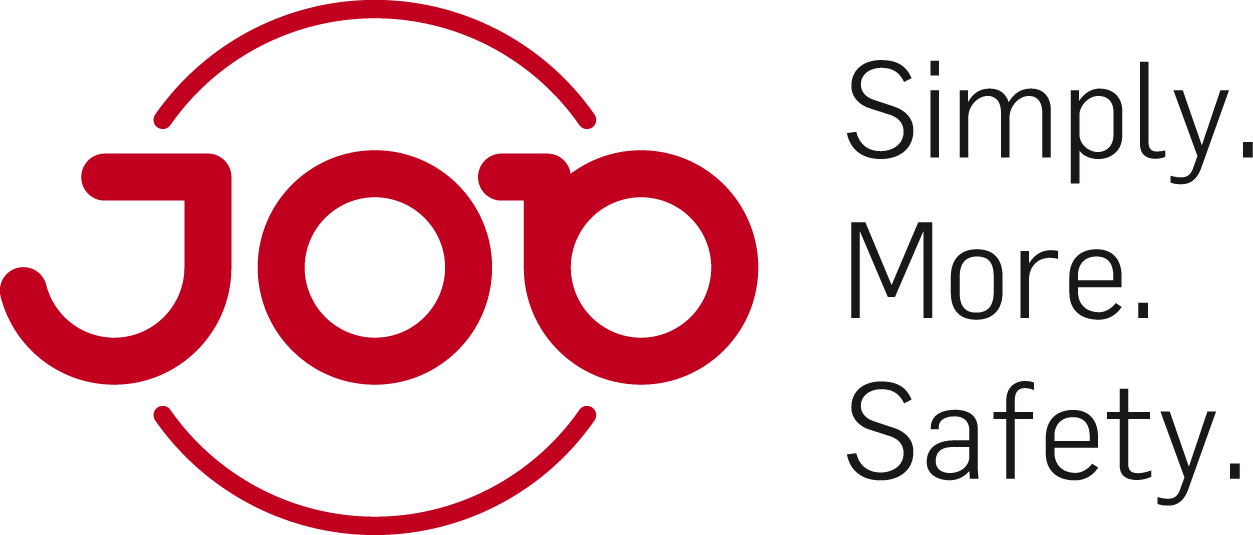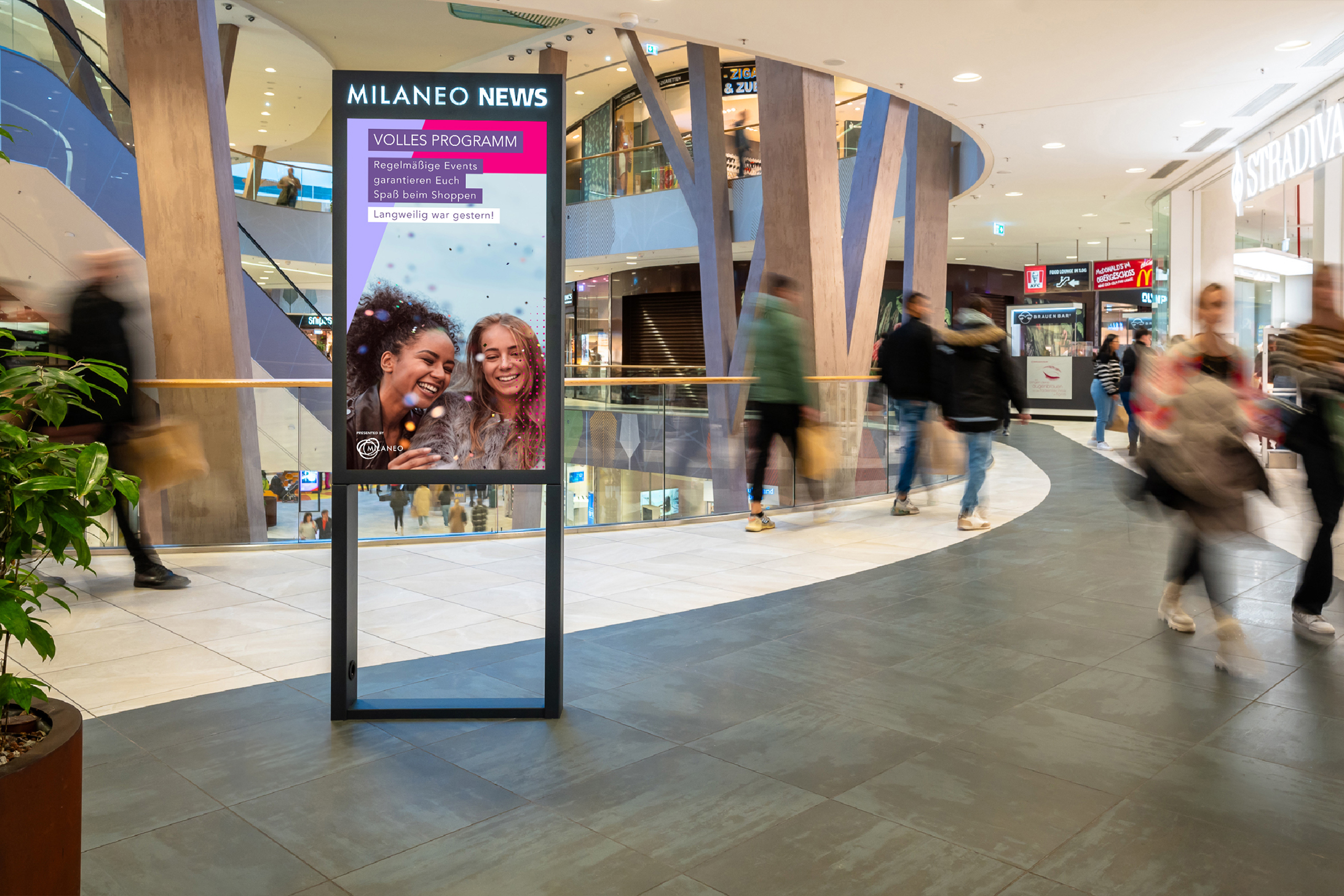Device-integrated fire protection – an important prerequisite for more digitalization at the point of sale
ECE Marketplaces equips digital center and customer information steles with AMFE Automatic Miniature Fire Extinguishing Unit from the JOB Group
Digital, fast information directly at the point of sale: this is what ECE Marketplaces GmbH & Co. KG is focusing on this with the new, self-developed Digital Center News Club (DCNC). Marcus Schwartz, Lead New Business, explains the background to this in an interview.
 Mr Schwartz, according to your description, you have developed the Digital Center News Club (DCNC), a unique and networked local center information system for shopping centers and retailers. What is this idea all about?
Mr Schwartz, according to your description, you have developed the Digital Center News Club (DCNC), a unique and networked local center information system for shopping centers and retailers. What is this idea all about?
Marcus Schwartz: We see it as our task to continuously bring new ideas and concepts to the shopping centers managed by ECE and, in particular, to promote digitalization in the mall, i.e. directly in front of the point of sale. As part of this, the DCNC will gradually replace a large number of analog information steles and boards at our locations throughout Germany.
It is important to know the background to this: In the initial situation, we were dealing with over 80 different formats of classic A1 posters, display stands, snap frames and similar information carriers. This variety has grown over the years, with a correspondingly high administrative effort. With the digital information steles, this effort becomes superfluous – in addition to all the other advantages that digital signage offers in terms of speed, flexibility, timeliness and technology.
Can you please explain the DCNC concept in more detail?
Marcus Schwartz: Our idea is to implement a genuine networked information platform in our centers with the Digital Center News Club (DCNC) – quick and easy to administer, with local, center-specific and shopping-relevant content. Networked means that we can offer a national system with over 80 shopping centers throughout Germany that enriches local center content such as events and special opening times with shopping-relevant trends, tips and services for visitors. Our retail partners place commercials which are then played out in a way that is tailored to the center in terms of region, city and shopping-relevant content.
One USP is the combination of national and local content. There is no external advertising; only tenants of the center can exclusively use DCNC as an extension of their shop window, so to speak.
To keep the information platform easy to use on site, we have developed a content management system with AI support. It automatically selects relevant content according to the region, time or even the current weather conditions. Example: On a rainy day in Stuttgart, product inspiration such as rubber boots or rain jackets are specifically displayed in this center. Tenants, in turn, can easily implement their content in the system via a browser.
That sounds like a very convincing concept! How easy – or complicated – was it to implement the roll-out of the DCNC steles in the centers?
Marcus Schwartz: It was and is relatively complicated and complex. First and foremost, we focus on the safety of our customers and the employees of our tenants. The centers are semi-public areas that we ourselves place the highest demands on in terms of fire protection, among other things – in addition to the requirements that have to be observed by the authorities. For this reason, it was also a basic requirement to prepare comprehensive static reports for the steles and, in particular, fire protection reports for the product in general, but also for each center. Early on in the development process, we opted for device-integrated fire protection in the form of the AMFE automatic miniature fire extinguishing unit from the JOB Group.
How important was the device-integrated fire protection for you?

This certification is a significant advantage and added value for us, as it has enabled us to place some of the steles in fire load-free zones of our centers. Thanks to the certification, the steles are considered “fire load-free”, as any fire that starts can be extinguished immediately and further consequences are avoided.
However, I have to admit that not every authority in Germany followed this logic straight away. The question of building approval is often even assessed differently from one office to the next.
How did you respond to this?
Marcus Schwartz: With comprehensive information and therefore a high level of transparency. This led to the realization of how effectively and reliably AMFE protects the digital steles against fires from the inside, for example in the event of a technical defect, and against consequential fire damage.
Another important argument is that the steles are also integrated into our emergency management system. In an emergency, they can be used to accompany evacuations, even in several languages, by displaying important messages and information directly on the displays. This aspect, in turn, has met with a very positive response from the authorities and has recently facilitated building approval in one or two centers.
Has the relatively new VdS leaflet 6024 on the safe use of digital media technology in sensitive areas made the approval process easier?
Marcus Schwartz: The new VdS guideline can certainly be very helpful in the future. However, when it was published, our planning was already very far advanced. In addition, from my observations, the guideline is not yet sufficiently well known – this applies to the authorities and even more so to the fire departments.
In my view, it would also be desirable for insurance companies to take even greater account of investments in device-integrated fire protection when calculating premiums.
You can find out more about VdS 6024 here:https://www.job-group.com/vds6024/
When did the DCNC implementation in the centers begin and what is the next step?
Marcus Schwartz: We started test operations on January 17, 2024, initially in Milaneo Stuttgart, and have since been rolling out the technology in an average of two national ECE centers per week. By November 2024, we will have equipped over 70 locations. On average, we are talking about >20 displays per center, and up to 40 displays for larger properties.
The entire project comprises over 1,000 digital steles. AMFE with an activation temperature of 79°C and cylinders with pressure sensors are used to ensure remote monitoring.
In your view, will the trend towards more and more media technology in bricks-and-mortar retail continue, including on the part of your tenants?
Marcus Schwartz: We see the trend towards digitalization everywhere, we read about it almost every day. The advantages of digital media technology are obvious. We are clearly noticing that, for example, posters in shop windows are increasingly being digitized by our rental partners.
Fire protection solutions will certainly help to accelerate this digitization, as we noticed in the Digital Center News Club project.



